Environments
VirtualHome is composed of 7 scenes where activities can be executed. Each scene is encoded as a dictionary, containing a node for every object and edges between them representing relationships. Each environment can be updated by modifying the corresponding dictionary. We call this dictionary EnvironmentGraph.
You can load each environment using unity_simulator.UnityCommunication.reset() function, specifying the matching environment id. You can retrieve the information of an environment using unity_simulator.UnityCommunication.environment_graph(). After loading an environment, you can modify it using unity_simulator.UnityCommunication.expand_scene().
Scenes
Below is a list of the 7 scenes included in VirtualHome.
Scene Id |
Apartment View |
|---|---|
0 |
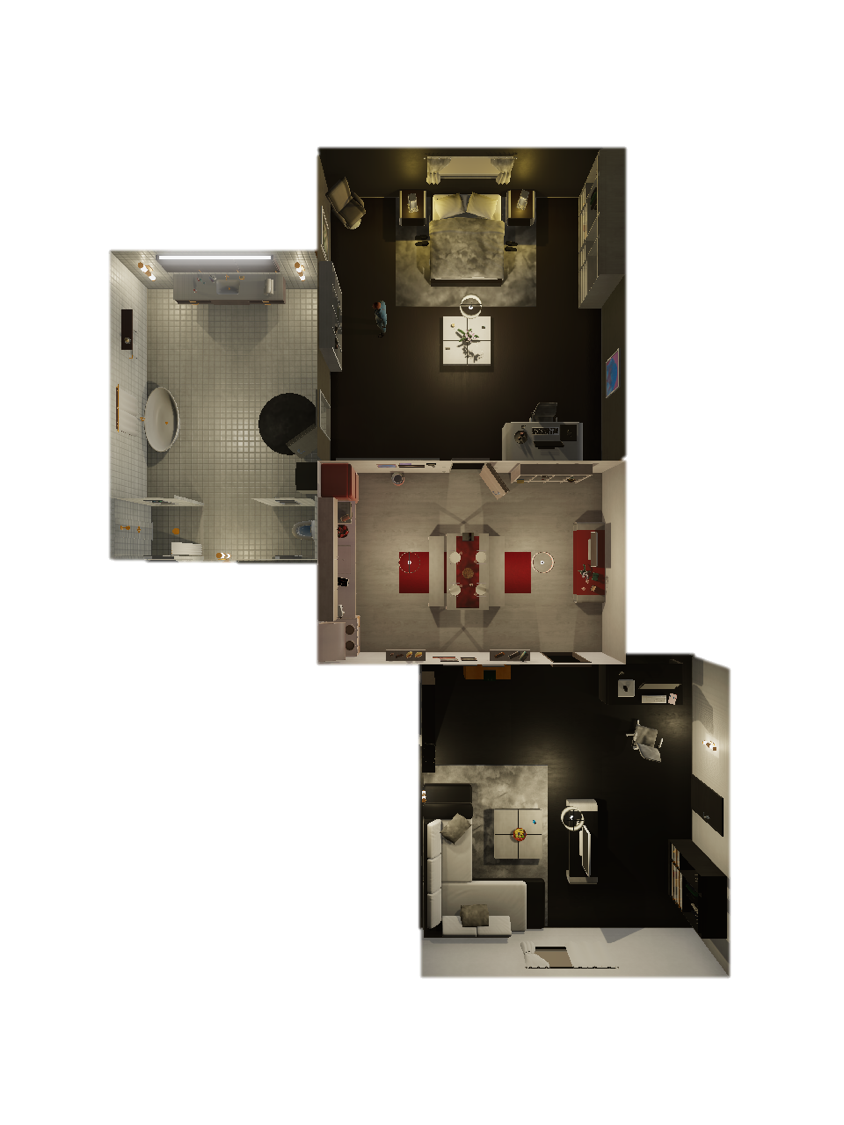
|
1 |
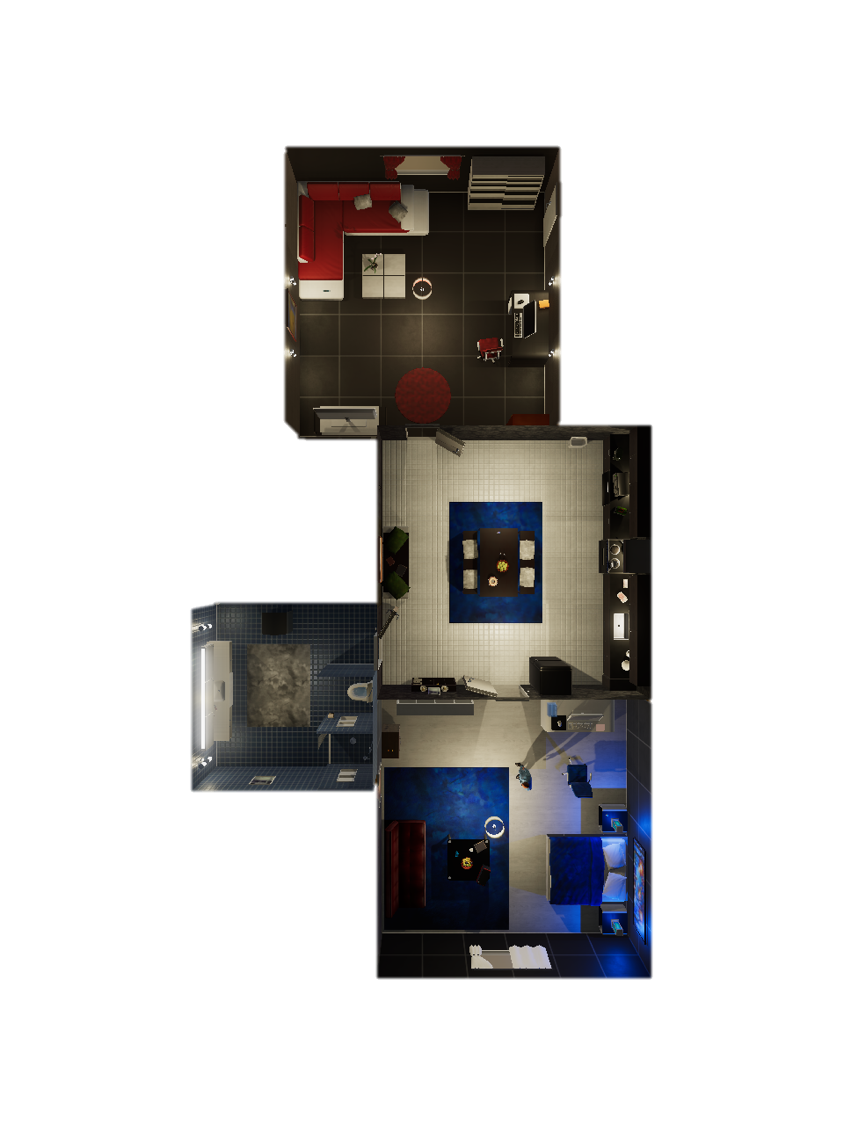
|
2 |
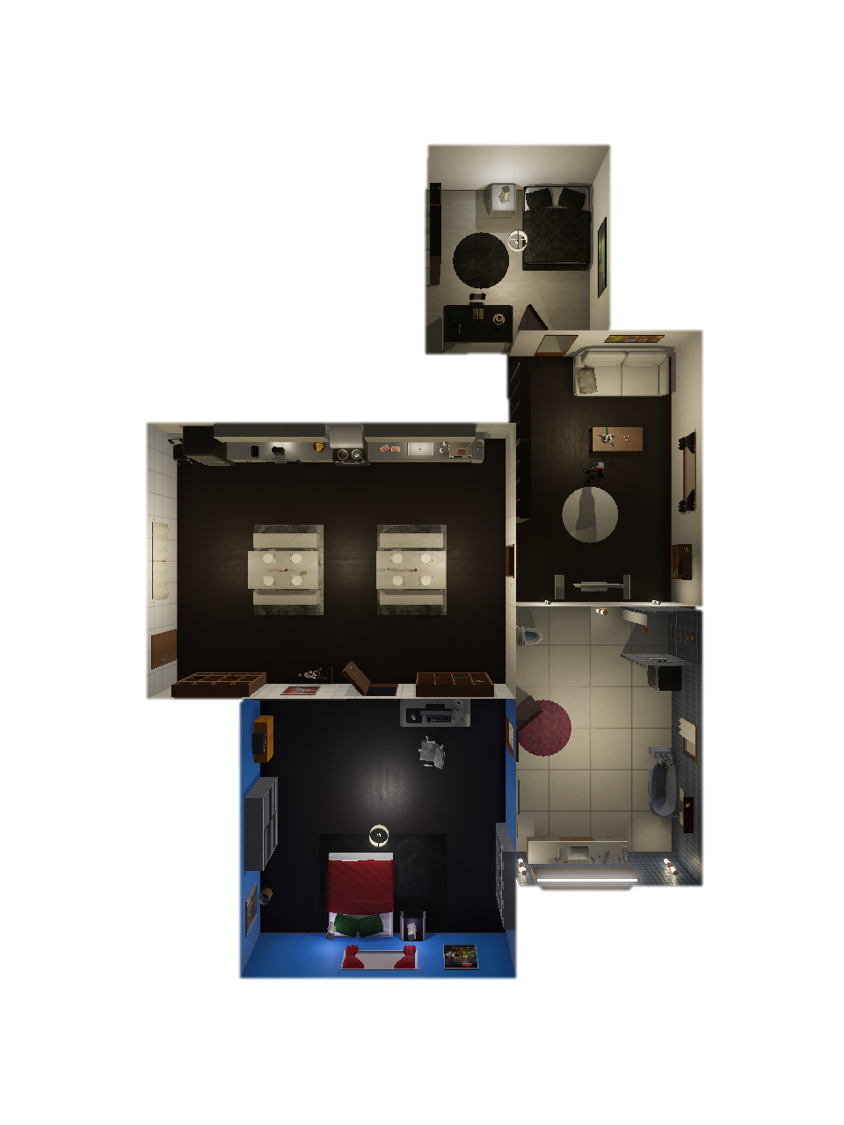
|
3 |
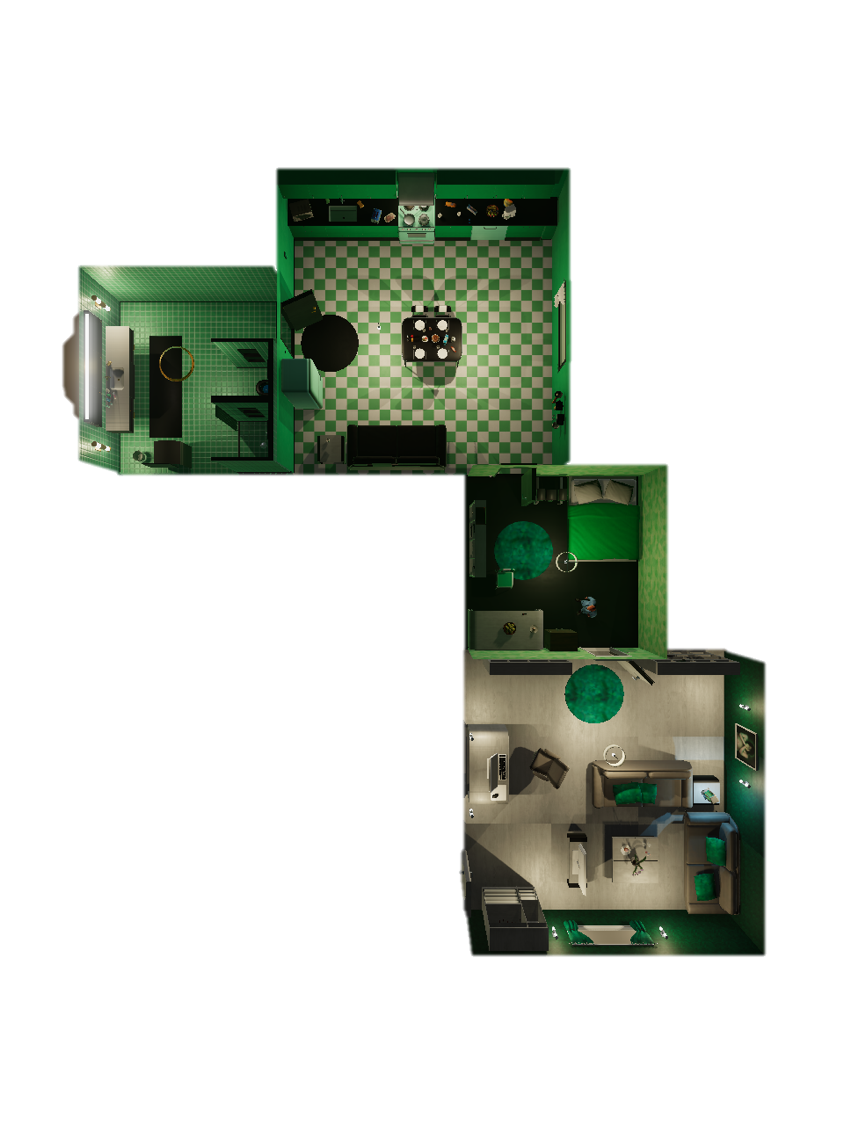
|
4 |
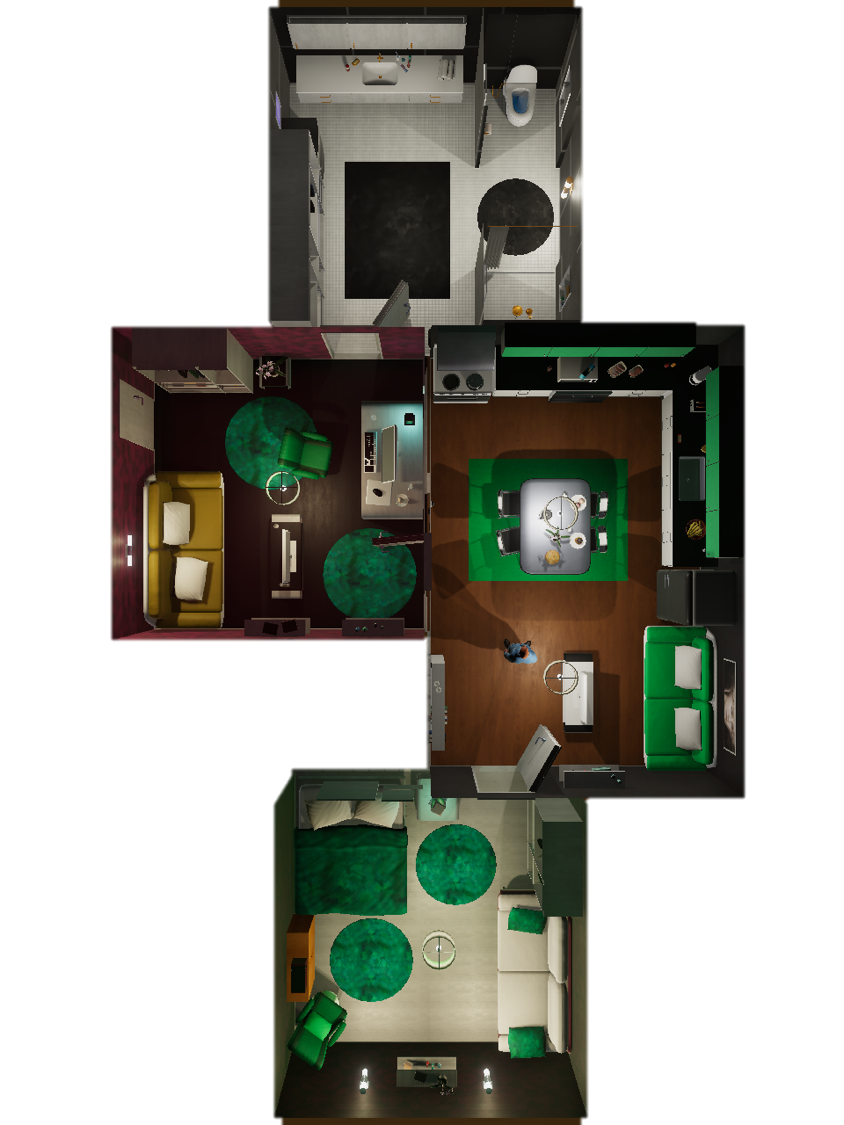
|
5 |
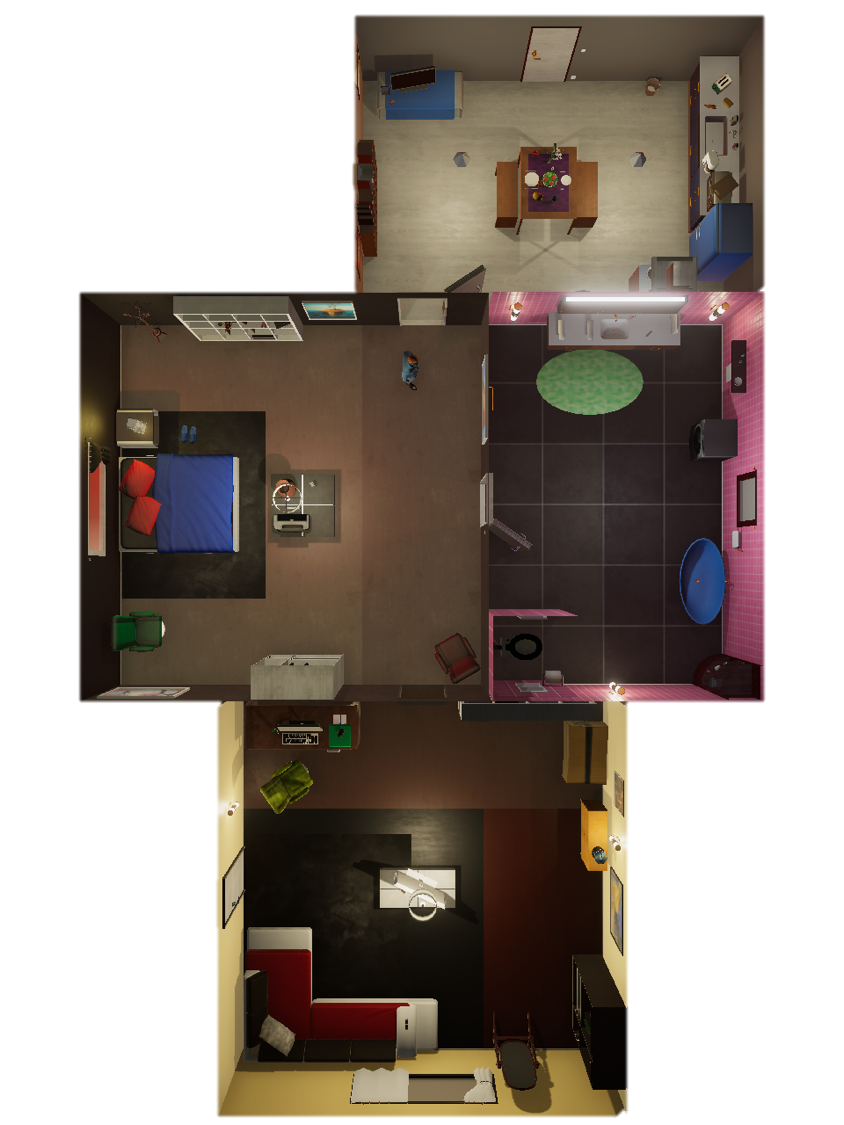
|
6 |
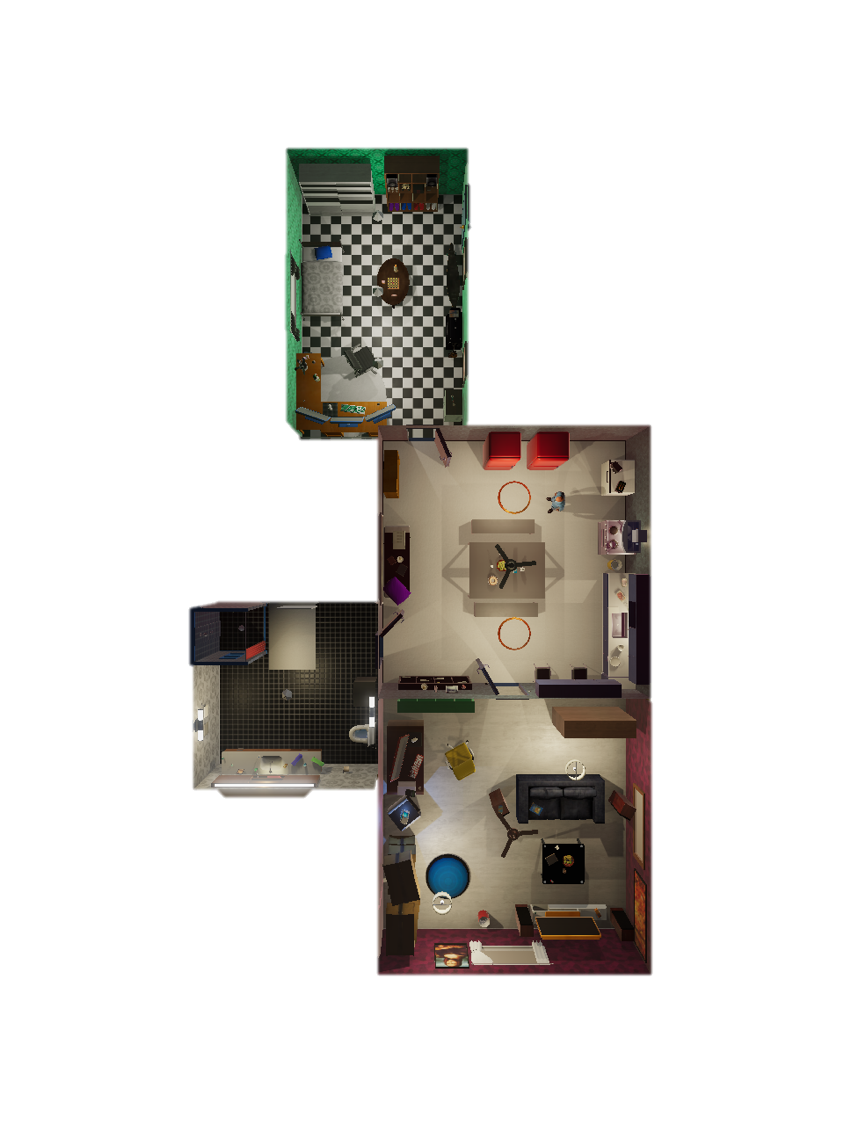
|
EnvironmentGraph
The EnvironmentGraph is the way to represent a scene in VirtualHome. It is represented as a dictionary of node, corresponding to objects, and edges, corresponding to relationships.
Here is an example:
{
"nodes":[
{
"id":1,
"class_name":"character",
"states":[
],
"properties":[
],
"category":"Person"
},
{
"id":2,
"class_name":"kitchen",
"states":[
],
"properties":[
],
"category":"Room"
}
],
"edges":[
{
"from_id":1,
"to_id":2,
"relation_type":"INSIDE"
}
]
}
The structure of the Graph is documented below.
EnvironmentGraph
- EnvironmentGraph
- Nodes
- Object Properties
id (int) – id of object
class_name (str) – class_name of the object
category (str) – cateogry of the object
prefab_name (str) – name of the Unity game object used
states (list(str)) – states of the objects
properties (list(str)) – properties of the objects
bounding_box (list(
BoundingBox)) – bounding box of the given objectobj_transform (
ObjTransform) – 3D information of the given object
- BoundingBox
- Object Properties
center (list(float)) – center of the bounding box, in x,y,z
size (list(float)) – size of the bounding box, in x,y,z. The size is axis aligned
- ObjTransform
- Object Properties
position (list(float)) – x,y,z position of the game object. Does not necessarily match with BoundingBox center.
rotation (list(float)) – x,y,z,w representation a quaternion of the object rotation https://docs.unity3d.com/ScriptReference/Quaternion.html
States
Objects can have the following states
State |
Meaning |
|---|---|
OPEN |
Indicates whether a container is open. |
CLOSED |
Indicates whether a container is closed. |
ON |
Indicates whether a light, electronic device is ON. |
OFF |
Indicates whether a light, electronic device is OFF. |
Properties
Objects can have the following properties. Some have effect on the Uniy Simulator and some are just used to categorize the objects. We only indicate meaning for the former.
Property |
Meaning |
|---|---|
CAN_OPEN |
Whether the object can be opened |
CLOTHES |
|
CONTAINERS |
|
COVER_OBJECT |
|
CREAM |
|
CUTTABLE |
|
DRINKABLE |
|
EATABLE |
|
GRABBABLE |
Whether the object can be grabbed |
HANGABLE |
|
HAS_PAPER |
|
HAS_PLUG |
|
HAS_SWITCH |
Whether the object can be turned on or off |
LIEABLE |
|
LOOKABLE |
|
MOVABLE |
|
POURABLE |
|
READABLE |
|
RECIPIENT |
|
SITTABLE |
Whether the agent can sit in this object |
SURFACE |
Whether the agent can place things on this object |
Relationships
Objects can have different relationships between each other, we describe here their meaning
Relation Type |
Meaning |
|---|---|
ON |
Object from_id is on top of object to_id. |
INSIDE |
Object from_id is inside of object to_id. |
BETWEEN |
Used for doors. Door connects with room to_id. |
CLOSE |
Object from_id is close to object to_id (< 1.5 metres). |
FACING |
Object to_id is visible from objects from_id and distance is < 5 metres. If object1 is a sofa or a chair it should also be turned towards object2. |
HOLDS_RH |
Character from_id holds object to_id with the right hand. |
HOLDS_LH |
Character from_id holds object to_id with the left hand. |
SITTING |
Character from_id is sitting in object to_id. |